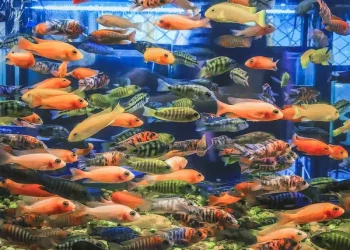Lungfish are a type of fish that are well-known for their ability to survive in extreme conditions. They have been around for over 380 million years and are found in freshwater habitats around the world. One of the most remarkable aspects of lungfish is their ability to survive without food for extended periods. In this article, we will discuss how long lungfish can go without eating and what factors can influence their survival.
Lungfish are adapted to survive in environments where food can be scarce. They are able to survive without food for up to six months, or even longer, depending on the species and their size. Some species of lungfish have been known to survive without food for up to a year.
The ability of lungfish to survive without food for such extended periods is due to their unique metabolism. They are able to slow down their metabolic rate and enter a state of torpor, which allows them to conserve energy and survive without food. During this state, they can lower their heart rate and breathing rate to a minimum, and their body temperature can drop to match the temperature of their environment.
However, it’s important to note that lungfish are not able to enter torpor indefinitely. Eventually, they will need to eat to replenish their energy stores and maintain their health. Factors such as age, size, and environmental conditions can also influence how long lungfish can survive without food.
For example, younger lungfish have smaller energy reserves and may not be able to survive as long without food as older fish. Additionally, larger lungfish may be able to survive longer without food than smaller ones due to their larger energy reserves.
The environmental conditions in which lungfish are kept can also affect their ability to survive without food. Lungfish that are kept in optimal conditions, such as in a clean and well-maintained aquarium with appropriate water temperature and pH levels, may be able to survive longer without food than those in poor conditions. Additionally, lungfish that are kept in a more natural environment, such as a pond or lake, may have access to more food sources and may not need to survive as long without food.
In conclusion, lungfish are able to survive without food for extended periods, up to six months or even longer. Their unique metabolism allows them to slow down their metabolic rate and enter a state of torpor to conserve energy. However, factors such as age, size, and environmental conditions can influence their ability to survive without food. As with any animal, it’s important to provide lungfish with the appropriate care and environment to ensure their health and well-being.


























